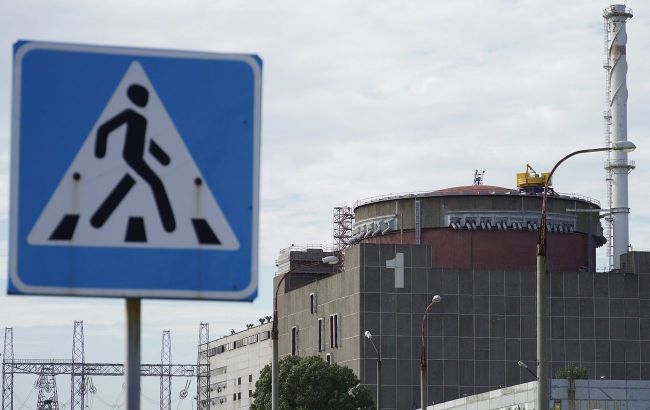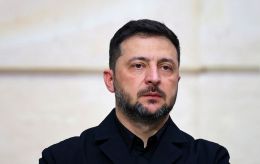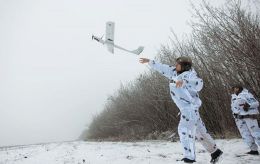IAEA experts couldn't determine cause of Zaporizhzhia NPP fire
 Photo: Zaporizhzhia NPP occupied by Russian invaders (Getty Images)
Photo: Zaporizhzhia NPP occupied by Russian invaders (Getty Images)
Specialists from the International Atomic Energy Agency inspected a cooling tower at the Russian-occupied Zaporizhzhia NPP that was damaged in a recent fire. The cause of the incident has not yet been determined, according to the IAEA
In an updated report, the Agency noted that on the morning of August 12, its experts visited the plant’s cooling towers to "observe the aftermath" of the fire that occurred on August 11.
"Based on the observations, the team assessed that it was unlikely that the primary source of the fire began at the base of the cooling tower," Director General Rafael Mariano Grossi said.
It was determined that the damage was likely concentrated in the internal part of the tower, near the water distribution nozzle located approximately 10 meters above ground.
The report states that the Russian occupiers denied the IAEA team access to the cooling water pool at the base of the cooling tower, citing "security concerns."
"Whilst visiting the impacted cooling tower, the team observed burnt areas in the internal equipment higher up, near the water nozzle distribution level. They also observed droplets of burnt plastic and fragments of fallen concrete distributed across the cold-water basin," the IAEA reported.
The team assessed that these droplets were consistent with melted and fallen plastic mesh from the fire, according to the IAEA.
Samples of debris, including burnt and melted plastic, were collected. The team noted a persistent smell of fire "and concluded that in the absence of a sulfur smell, it was most likely caused by burning plastic."
The IAEA specialists didn't observe any remnants of tires (there had been reports that the Russian occupiers might have set fire to car tires to stage a provocation) or drones (the Russian occupiers' "team" at ZNPP had claimed there might have been a UAV attack on the plant).
"The team confirmed that there were no significant signs of disturbance of the debris, ash or soot located at the base of the cooling tower," the IAEA's statement said.
The IAEA emphasized that the nuclear safety of the plant was not compromised, as the cooling towers are currently not operational. Additionally, there are no radioactive materials in the area of the cooling towers, which are located approximately 1.5 kilometers from the reactor blocks of ZNPP.
"The team conducted radiation monitoring in the area of the cooling towers and the reactors and confirmed no signs of elevated radiation levels," the IAEA reported.
The report states that the IAEA team "could not draw definitive conclusions based on the data and observations obtained" regarding the fire that occurred two days ago. However, they promised to continue their analysis after further inspection and access to the water distribution nozzle level and the cold water pool.
Fire at Zaporizhzhia NPP
On August 11, Yevhen Yevtushenko, the head of the Nikopol district military administration, stated that residents of Nikopol noticed a fire in one of the cooling towers at the Zaporizhzhia NPP on the temporarily occupied shore of the former Kakhovka reservoir.
The official also stressed that the ZNPP is operating as usual.
Later, President Volodymyr Zelenskyy stated that Russian occupiers set a fire on the territory of the Zaporizhzhia Nuclear Power Plant, adding that Ukraine expects a response from the international community and the IAEA.
Subsequently, the IAEA stated that its experts witnessed heavy dark smoke in the northern part of the ZNPP, which appeared after multiple explosions.
Additionally, Energoatom suggested that the fire at ZNPP was likely caused either by the Russian occupiers' negligence or by deliberate arson. They also confirmed that no excess levels of radioactive emissions or discharges were recorded.

